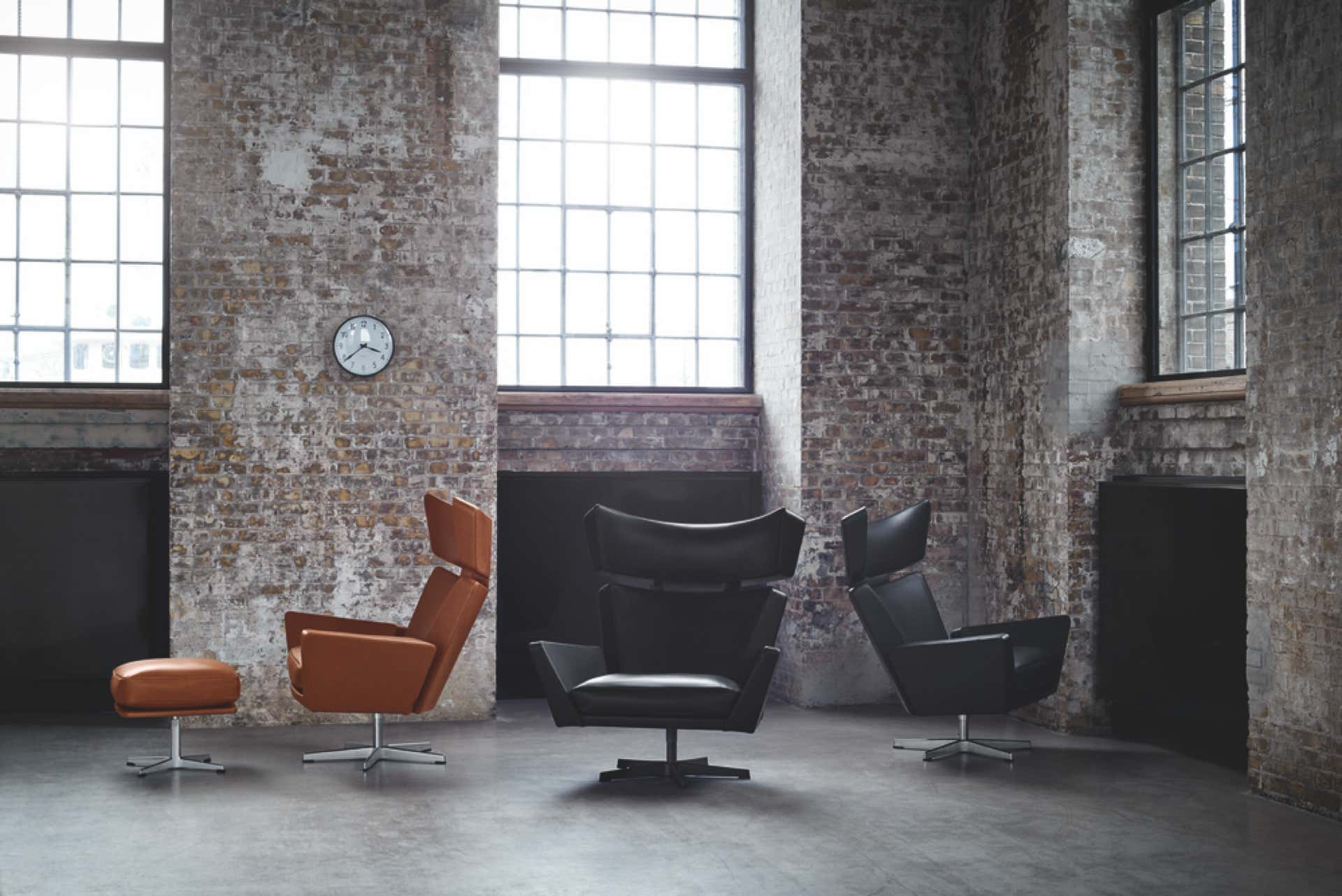
Unlike many of Arne Jacobsen's works, the Oksen lounge chair was not designed for a specific architectural project. The largest armchair produced by its creator, it is the result of numerous experiments carried out by the great Danish master between 1961 and 1966. Like its predecessor, the Œuf, the Oksen will add a powerful personality to any interior.
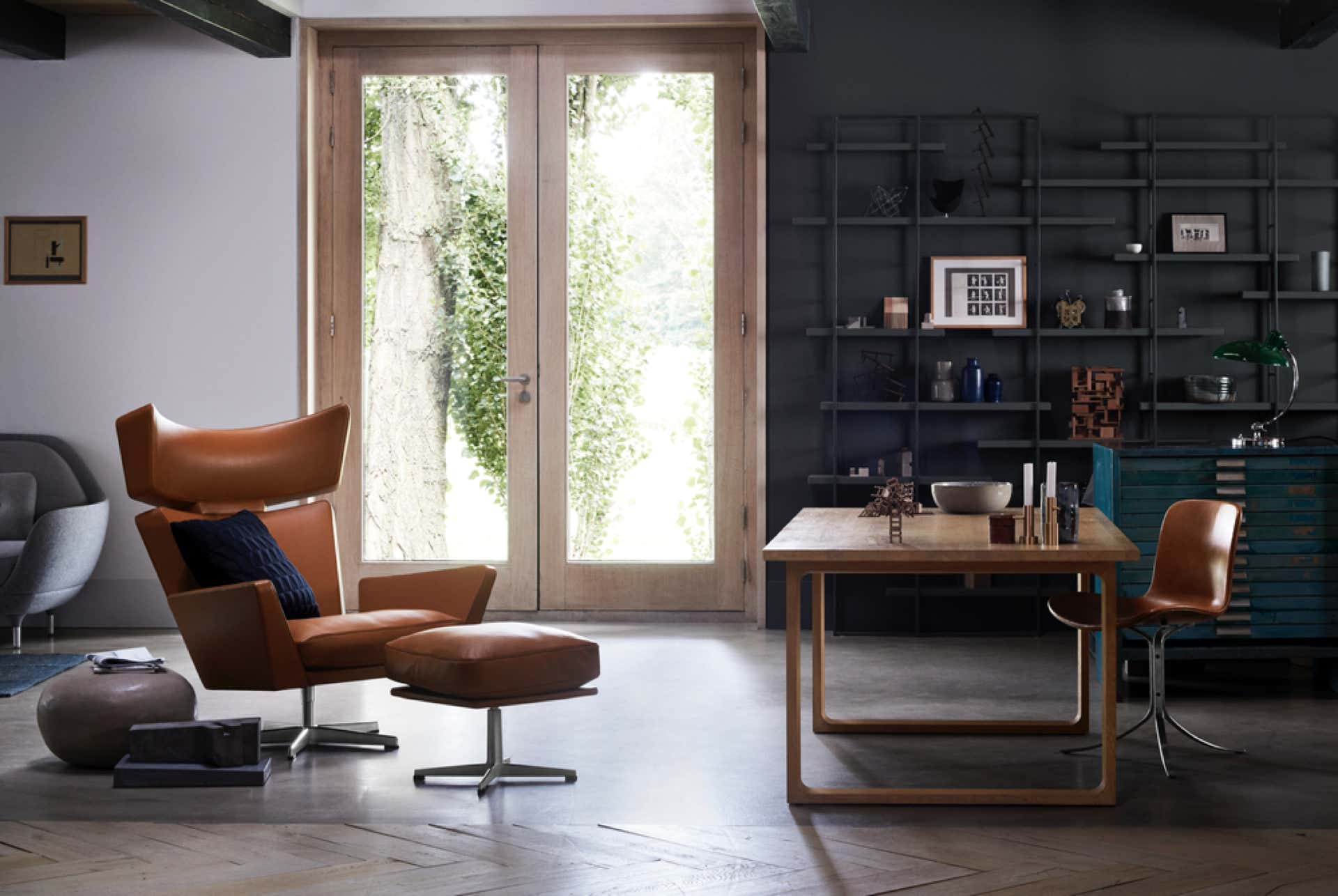
Arne Jacobsen, who liked to renew himself and surprise his public, may well have developed it partly to escape his notoriety as a designer of furniture with organic shapes. The starting point for his inspiration was a trip he made to the United States, where he saw the many angular recliners being produced at the time. The result is an armchair with a powerful, coherent expression that is both disconcerting and seductive.
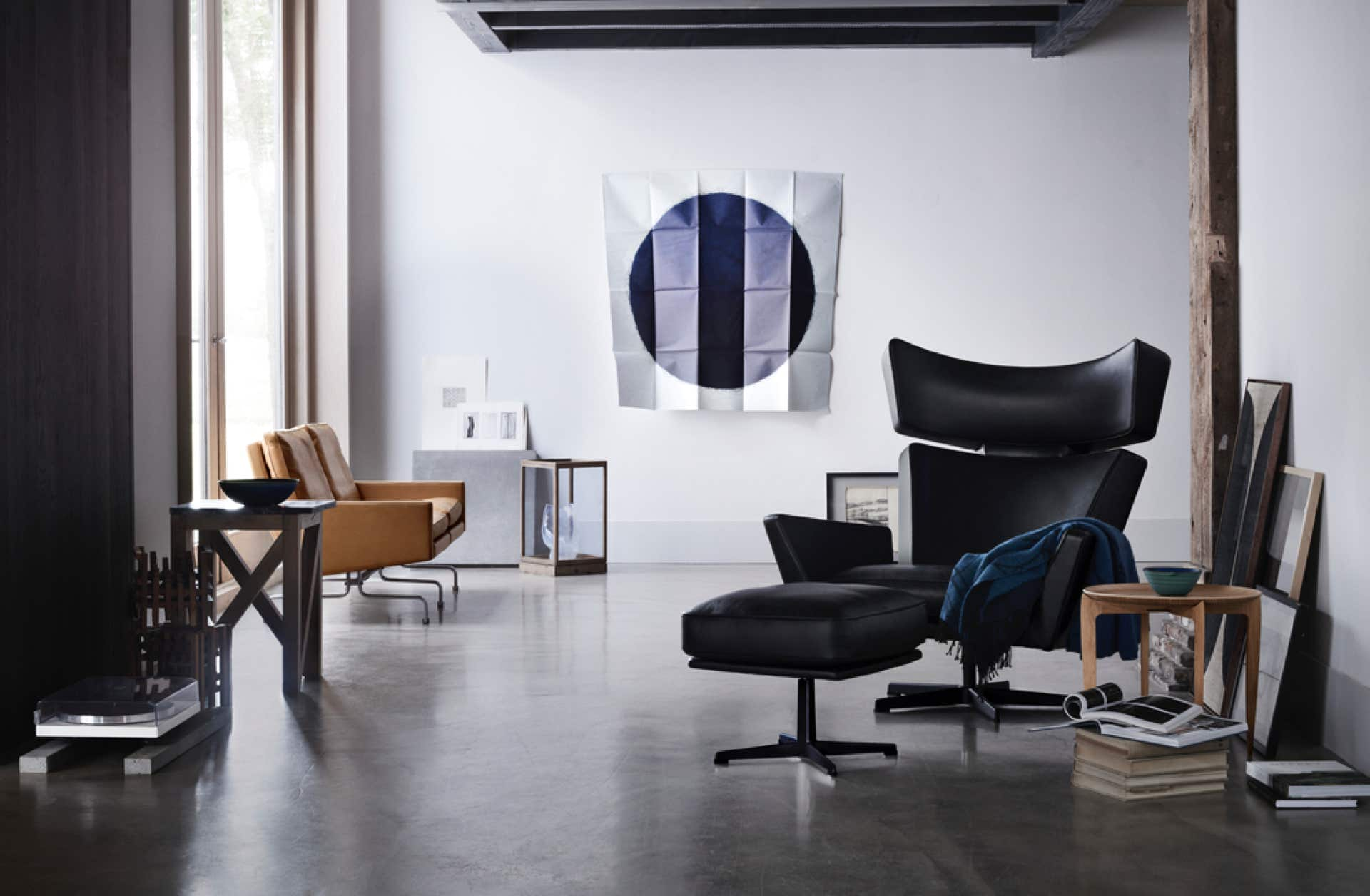
Upholstery Oksen comes in leather only and in three different leather types: the beautiful Elegance leather and the strong Classic leather in black or Walnut and finally in Extreme leather in black only. Whilst the chair looks graphical and almost facetted shaped when you look at it from the side and from the back, the actual seating part is softened by a foam and down seat and foam layered neck. The seat will soften in time as the chair slowly ages with beauty. Furthermore, the back of Oksen is handstitched just like the Egg while the front side is sowed.
Base The base of the chair is the original and recognisable Arne Jacobsen 5-star base, and the base of the matching footstool is the 4-star base. Furthermore the columns of the chair is also available with return mechanism. The base is available in two versions: black powder coated aluminium and satin polished aluminium.

Oksen Chair
from
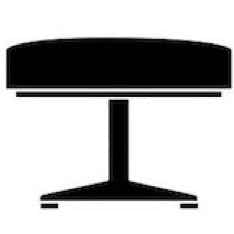
Oksen Footstool
from
Free samples (against deposit)
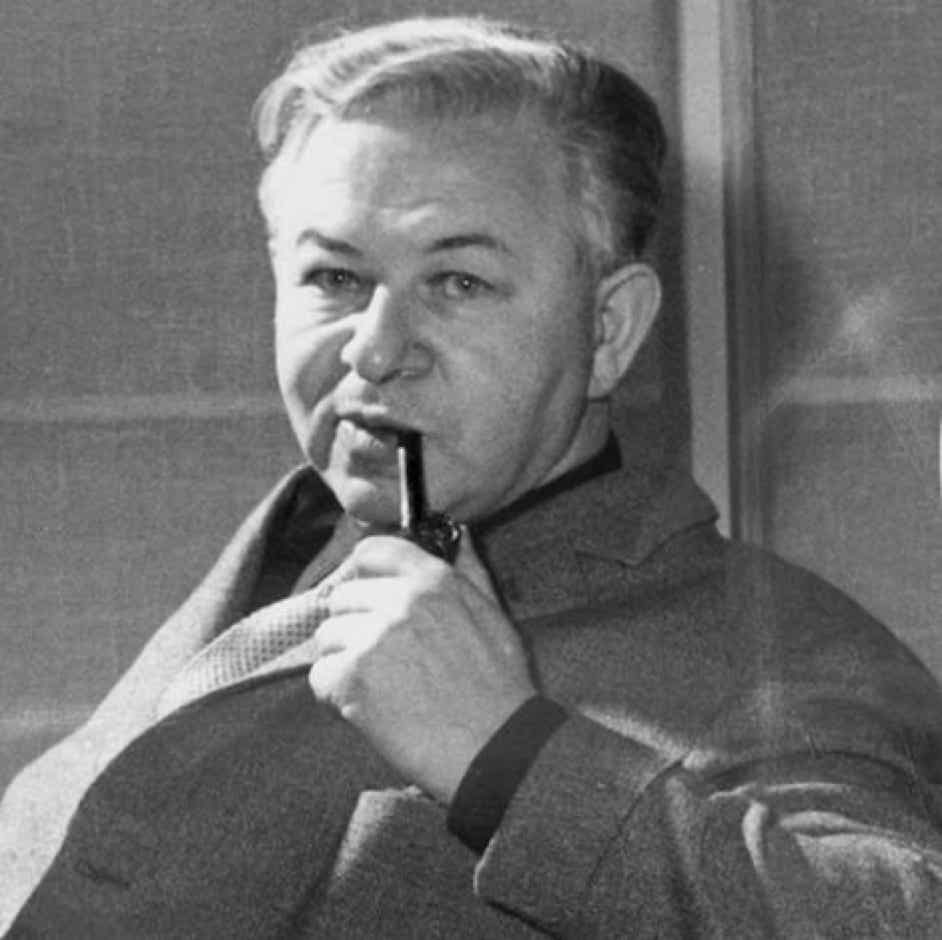
Arne Jacobsen was born on February 11, 1902 in Copenhagen. His father, Johan Jacobsen, is a wholesale trader in safety pins and snap fasteners. His mother, Pouline Jacobsen, a bank clerk, paints floral motifs in her spare time. The family lived in a typical Victorian style home. As a contrast to his parents’ overly decorated taste, Arne paints his room in white.
Background & school relations
He met the Lassen brothers at Nærum Boarding School: later, Flemming Lassen was to become his partner in a series of architectural projects. Arne Jacobsen is a restless pupil, always up to pranks, with a self-deprecating humour. Already as a child, he showed an extraordinary talent for drawing and depicting nature through scrupulous studies. He wants to be painter, but his father felt that architect was a more sensible choice.
The Pleasant and the necessary trips abroad
Jacobsen’s travelling begin already in his twenties, when he went to sea to New York. Then followed an apprenticeship as a bricklayer in Germany and a series of study and drawing excursions to Italy. Jacobsen produced some of his finest watercolours during this period, capturing atmospheres and shapes accurately and carefully. From the beginning of his career, Jacobsen turned his gaze abroad, without abandoning Danish traditions.
Arne Jacobsen behind the design
Jacobsen production reflects his personality: an insistent, perfectionist modernist, to whom no detail was trivial, although the main picture was basically black/white and unambiguous. On the other hand, the nature-loving botanist and jovial family man: like him, his work is precise and warm, Danish and universal, modern and timeless.